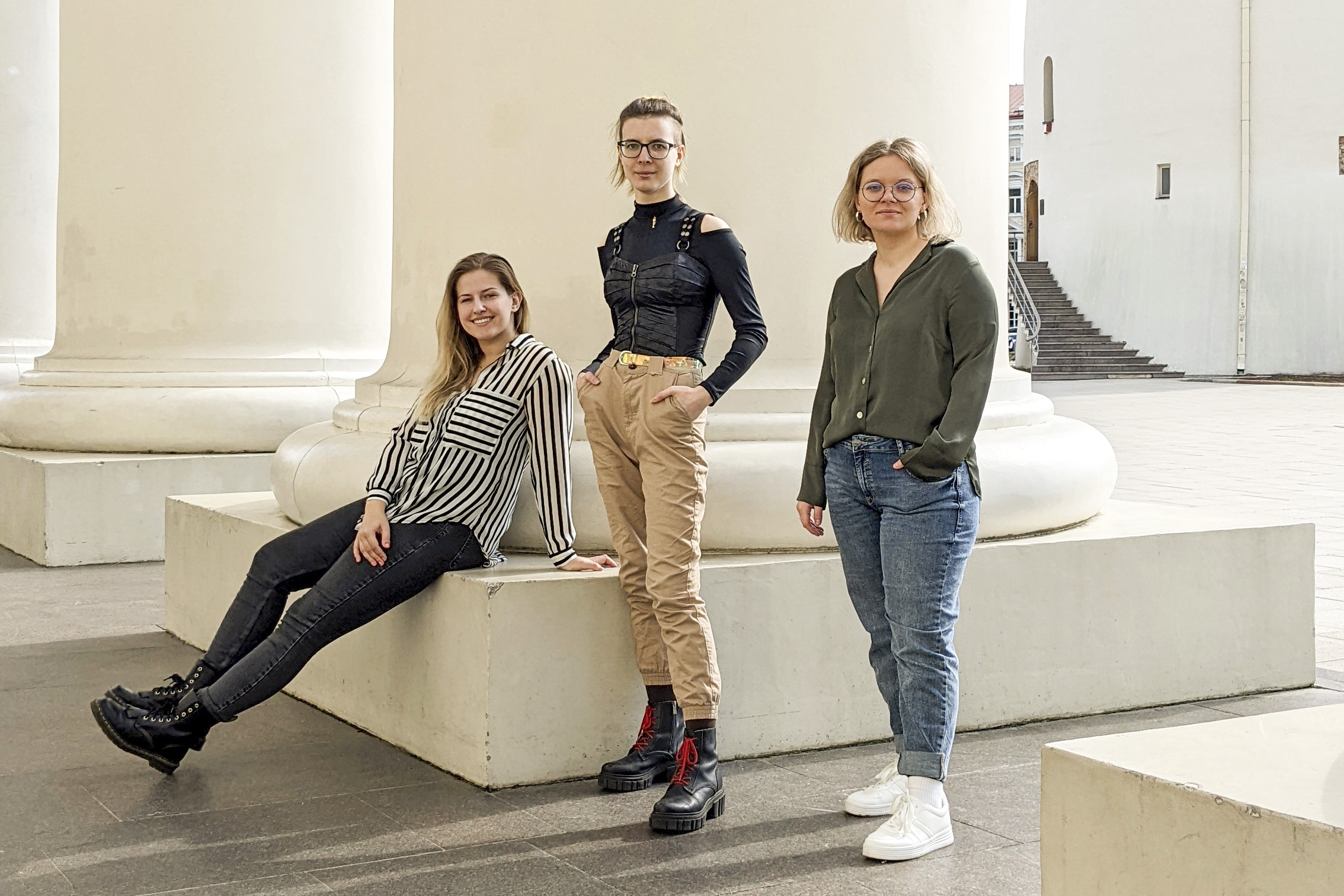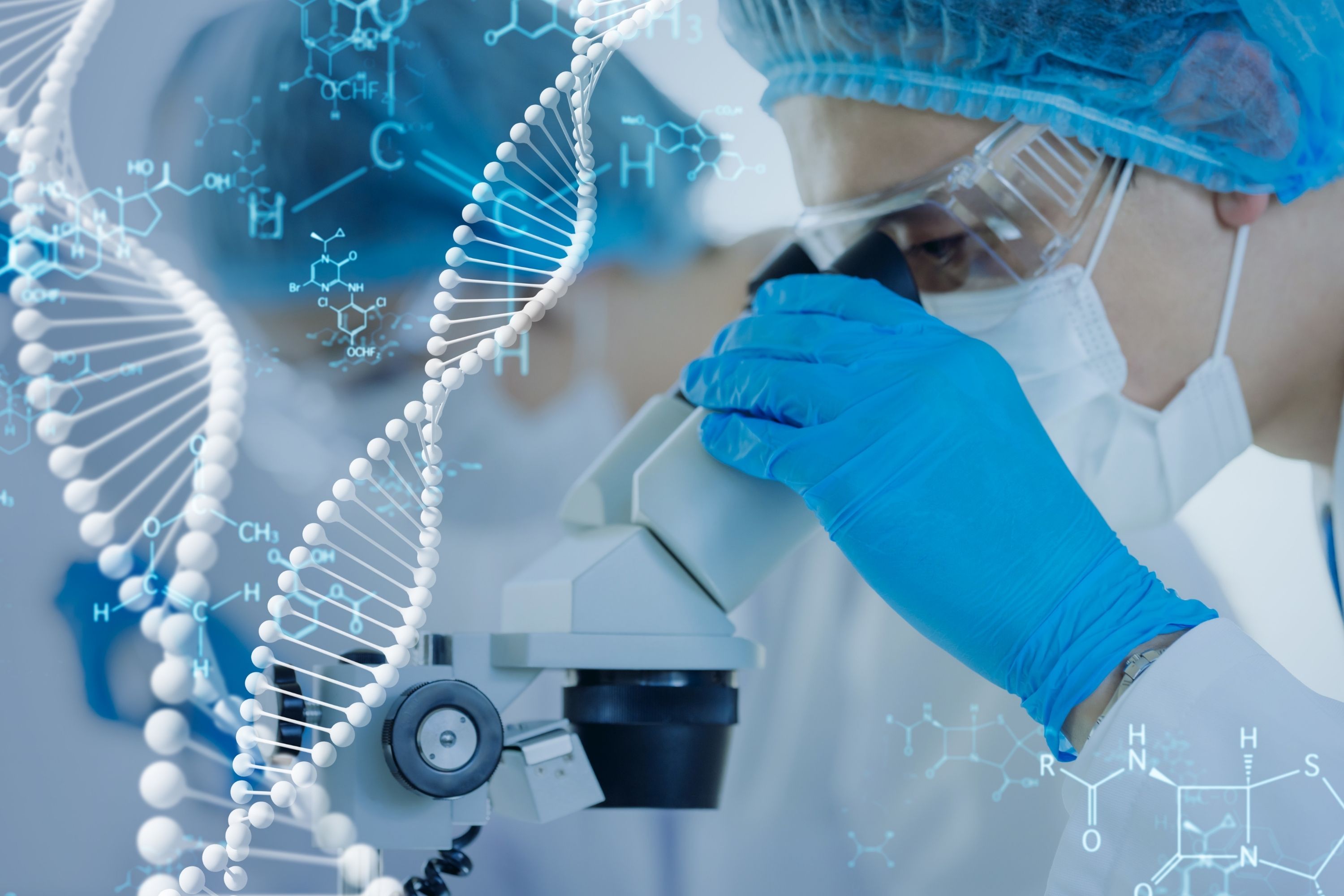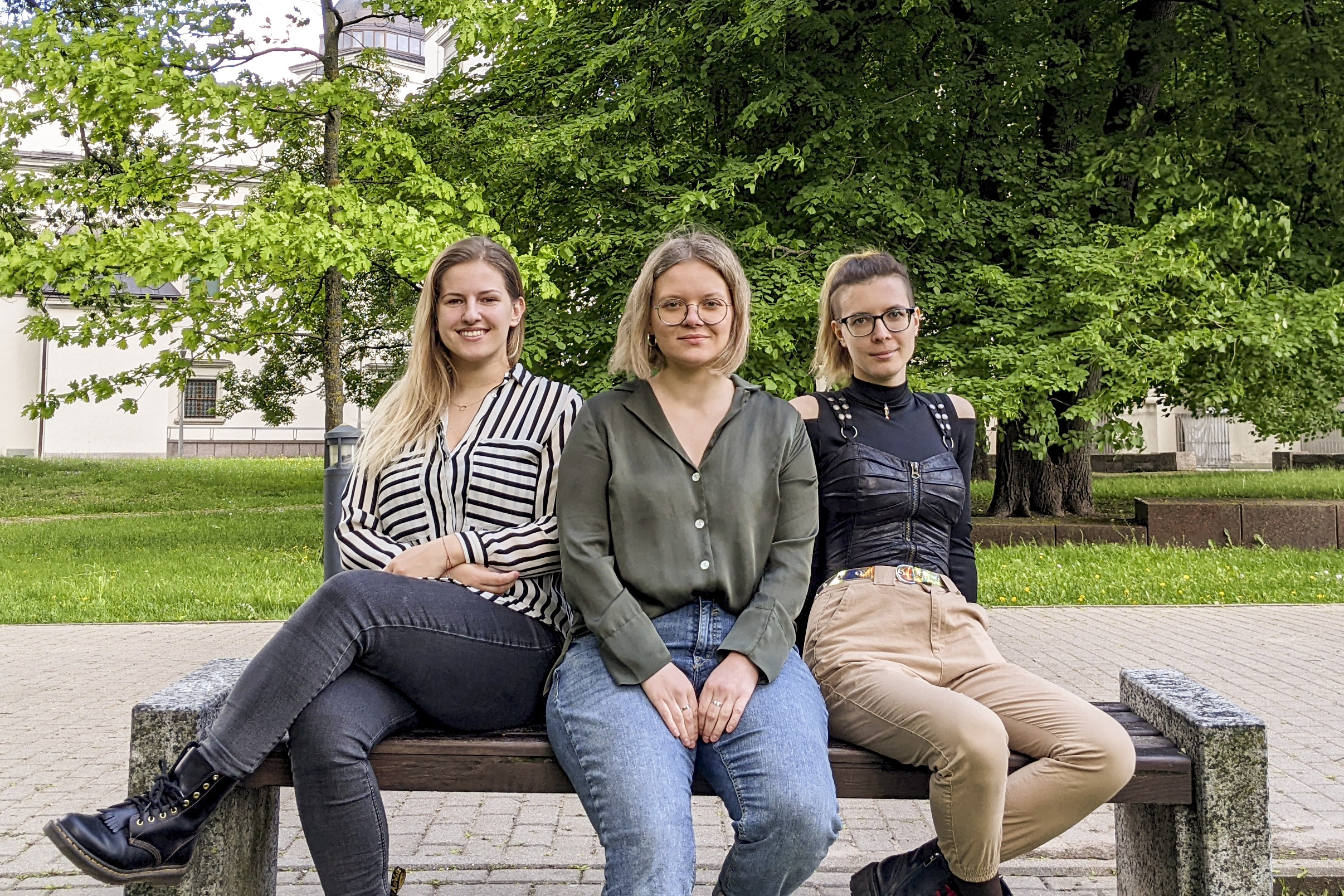
“We live in the age of information, where we are no-longer physically capable of processing all the information we need for the research we do. So we need help to process the data, understand it and use it in the development of certain analysis models, etc.,” explained Emilija Sadauskaitė, a graduate of the Systems Biology study programme at Vilnius University (VU). She and two other graduates of the study program – Taisija Dėmčėnko and Julija Domarkaitė – shared their thoughts on the importance of effective analysis of large-scale data in research that is relevant to society.
Importance of efficiency in research
If we look from the past to the present, it is clear that one of the most important factors leading to the overall progress of society has been increasing work efficiency. For example, today, most of the physical work is performed by robots. As a result, not only the productivity at work has improved, but also the quality of products and services. Automated processes are accurate and consistent, eliminating things like distraction and fatigue for the human workforce.
Efficiency has also become relevant in data analysis. Monitoring and processing the ever-increasing amount of data that needs to be analysed by researchers working in the fields of biotechnology, pharmacy, healthcare and other sectors, has become more complex and takes a lot of time.
To optimise this process, IT specialists often become part of the research teams. So, even if data selection for the analysis of the proposed hypotheses might be a difficult task for a scientist, it can be an easy task for a specialist with the tools of bioinformatics analysis available to perform comprehensive data analysis. Although such analytical work requires the involvement of two, or even three specialists, it facilitates significantly faster decision-making and progress in scientific research endeavours.
How does it all work?
According to Taisija Dėmčėnko, another master’s graduate of the Systems Biology programme at VU, in order to explain how data is used to find the data that is of interest to scientists, sometimes the Law of Attraction can come to our aid: “Long ago, it was discovered that an apple falls from the tree due to the gravitational attraction of the Earth. At the time a lot of time and calculations were required to calculate the force of gravity. Let’s imagine that today artificial intelligence has a lot of different raw data on how apples of different sizes fall, including, how long it takes to fall, how they will fall, and so on. By building an appropriate model, it is possible to feed artificial intelligence with only part of the data and then, using the initial data, it will figure out a formula to find the missing data. As a result, we obtain hypotheses for the missing data.”
The information obtained in this way is subsequently used for very different purposes – from research in the field of human genetics to smart watches, determining how the human body responds to physical load for example, and providing appropriate input.
 Photo: Canva.com
Photo: Canva.com
Studies to predict the future situation
Using the knowledge acquired during her studies, Emilija Sadauskaitė conducted a study of COVID-19 sequences and their mutations. The information generated, allowed us to make appropriate assumptions about how contagious some strains of virus could be and what we could expect to happen in the future: “When the pandemic started, it was vital to research the virus, its sequence and how it affected health. It was also essential to observe the virus and its mutations, and how these mutations could affect the characteristics of the virus. In other words, it was important to study the evolution of the virus so that we would know what further steps we should take to control it. So my goal, like that of the majority of scientists who work in this field, was to study the virus, to spot recurrent trends, to look for correlations between the mutations of the virus and to assess how dangerous it was.”
Sadauskaitė noted that the amount of research carried out using databases in different laboratories across the world is growing every day. As a consequence, the selection and analysis of the necessary data, is not as simple as it might seem at first glance. “The amount of data is massive! To find the necessary information, you must know certain data and characteristics, and then retrieve and process the data. We couldn’t imagine the process without the help of computers. Perhaps this process could be automated, but the correct sequence of actions or processes is required, otherwise, it will only be a totality of randomly collected facts.”
The timely prevention of the possibility of blindness
Julija Domarkaitėxplained how her research was aimed at helping doctors apply artificial intelligence technologies directly in their work, which would allow them to deliver results to patients more quickly. “The retina of the eye is the only part of the human body where blood circulation can be monitored and analysed in a non-invasive way. This is done by taking images of the back of the eye, where the blood vessels of the retina are visible. By analysing changes in the blood vessels, the progression of diabetic retinopathy (one of the complications of diabetes), systemic hypertension and hypertensive retinopathy can be monitored. If not detected early enough, diabetic retinopathy causes blindness and is still the leading cause of blindness in adults worldwide. However, currently, there is a shortage of specialists with specific competences, because the number of patients is huge and growing, the analysis itself is complicated, and it can take an ophthalmologist 1 to 2 hours to evaluate one image of the back of an eye. This study is special, because it offers real benefits – by applying artificial intelligence algorithms, one image can be analysed in less than a minute, making diagnosis and beginning effective treatment much faster,” Domarkaitė explained.
She noted that this was not a new scientific topic. It is studied by many scientists across the world who share the models and images produced by artificial intelligence capturing changes in the condition of vision at different stages in the progression of the disease: “This is a topic under consideration. There are still a number of complications that prevent the application of models in practice to allow doctors to make unambiguous decisions. The variable quality of the images also has a huge impact on the effectiveness of the solutions, and this was also examined in our research.”

Systems biology for dream decoding
Dėmčėnko explained that it is fascinating how this large-scale data analysis can serve in different fields. The abundance of data and the variety of artificial intelligence modules, allow us to make predictions in any number of fields, not only in healthcare or related areas. “Some modules are better at recognising certain repetitive trends in photographs, while other modules can better recognise changes that occur over time. For example, using relevant data and modules, the price of a particular type of apartments in a few years’ time can be predicted. Research opportunities are rapidly developing and improving.”
Dėmčėnko went on to discuss her research which involved the analysis of the main data by recording signals of electromagnetic brain activity using sensors: “In the future, I want to decode people’s dreams. When dreaming, the brain is active, it is possible to record electromagnetic signals in real time. Therefore, in theory, it should be possible to use the information obtained information to generate text or images. We would be able see what the person was dreaming about while sleeping.”
Seeking welfare of society promotes cooperation
The interviewees noted that to achieve change in any field of research, it is necessary to cooperate with other specialists working in the field. Those scientists interested in the welfare of society and faster progress toward positive change, actively share the available information, collected data and selected modules, thereby helping each other out. Specialists in systems biology who have the competences required for large-scale data analysis, become the core of effective cooperation.
According to Domarkaitė, these specialists are required not only in the sectors of biotechnology, pharmacy and healthcare, but also in fields such as business: “Regardless of the field where data analysis is required, a system biologist can apply their knowledge and competences.”
